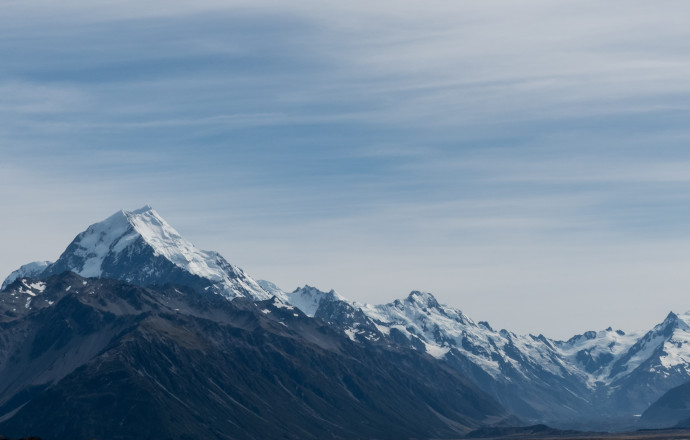Displacement history of the Alpine Fault and origin of New Zealand’s Southern Alps
In this seminar, hosted by the Geoscience Society of New Zealand, Associate Professor Simon Lamb will present some new ideas about both the geometry and displacement history of New Zealand’s Alpine Fault.

This fault is one of the larger and more rapidly slipping continental strike-slip faults on the planet, and, as such, constitutes a major seismic hazard. Both its geometry and displacement history suggest a need to rethink its role in accommodating Cenozoic deformation in the New Zealand plate boundary zone.
Simon will begin this talk by examining the widely accepted ~450 km Cenozoic dextral strike-slip displacement. He will show that there is now a large body of geological and palaeomagnetic data that indicate that this conclusion is an artifact of assumptions about the geometry of New Zealand’s basement terranes in the Eocene, and the actual Cenozoic dextral displacement is in excess of 700 km across a narrow zone about 10 km wide.
This way, the Alpine Fault has accommodated almost all (>94%) of the strike-slip component of relative plate motion in the last 25 Ma at an average rate of about 28 mm/yr. It reverses about 250 km of sinistral shear through Zealandia in the Late Cretaceous, when Zealandia lay on the margin of Gondwana, providing a direct constraint on the kinematics of extension between East and West Antarctica at this time.
The revised displacement history of the Alpine Fault also shows that the New Zealand orocline developed in two stages, with oroclinal bending of the prominent basement terranes in the Mesozoic, and subsequent rotation of the Hikurangi margin during the Neogene with the development of the New Zealand plate boundary zone.
It is generally assumed that the creation of the Southern Alps is closely linked to the orthogonal component of plate convergence on the Alpine Fault. Using a simple 2-D model of crustal balancing, Simon will show that the observed crustal root and erosion is up to twice that predicted by the orthogonal plate convergence since ~23 Ma, when rapid dextral motion on the Alpine Fault initiated.
Geophysical data indicates that the Alpine Fault has a listric geometry, flattening at mid-crustal levels, and has accommodated sideways underthrusting of Australian plate crust beneath Pacific plate crust, and this mode of deformation is active today.
The geometry of the crustal root, together with plate reconstructions, require the underthrust crust to be part of an asymmetric rift system which formed over 500 km farther south during the Eocene. At ~10 Ma, this margin underwent shallow subduction in the Puysegur subduction zone, and then was dragged sideways over 300 km along the length of the Southern Alps beneath a low angle section of the Alpine Fault, thickening the crust mainly because of the component of plate motion parallel to the fault, rather than just the orthogonal component of plate convergence.
This way, displacement on the Alpine Fault has accommodated almost all of the total Cenozoic deformation in central and southern South Island.
SPEAKER
Simon Lamb
Associate Professor
ORGANISATION
Geoscience Society of New Zealand Wellington Branch
VENUE/DATE
RHLT1, Rutherford House, Bunny Street, VUW
7:30pm Thu 11 March, 2021
